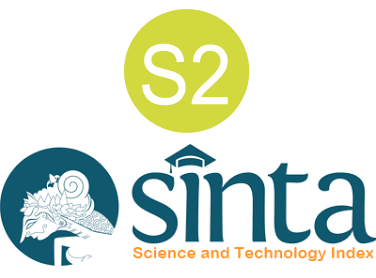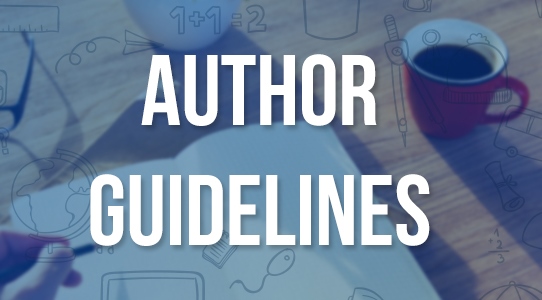The Influence of Leadership, Work Culture, and Competencies on Commitment and Implications on Performance Private College Lecturer in Makassar City
DOI:
https://doi.org/10.37680/qalamuna.v17i1.5568Keywords:
Commitment; Competence Lecturers; Leadership; Performance; Work CultureAbstract
This study investigates the impact of leadership, work culture, and competency on lecturer commitment and their combined effect on lecturer performance at private universities in Makassar City. The objectives include 1) analyzing the influence of leadership, work culture, and competency on commitment; 2) examining their direct effects on lecturer performance; and 3) exploring how commitment mediates the relationship between these factors and lecturer performance. Using a sample of 100 lecturers from management programs at accredited institutions, the study applies SEM analysis to assess validity, reliability, and the structural relationship between variables. Results indicate that while leadership has an insignificant effect on commitment, work culture and competency significantly enhance lecturer commitment. Moreover, lecturer commitment significantly improves performance, explaining 62.8% of its variation. These findings highlight the importance of fostering effective work cultures and enhancing competencies to boost commitment and performance in higher education settings.
References
Ameri, A. Al, Ameri, A. Al, Ghonim, A. S., & Ghonim, A. (2022). Building an Excellence Capabilities Portfolio in Higher Education: A Case Study of Higher Colleges of Technology, UAE. International Journal of Higher Education. https://doi.org/10.5430/ijhe.v11n4p49
Barney, J. B., & Hesterly, W. S. (n.d.). Strategic Management and Competitive Advantage GlobAl edition.
Batanero, J. M. F., Batanero, J. M. F., Rueda, M. M., Rueda, M. M., Fernández-Cerero, J., & Fernández‐Cerero, J. (2022). Access and Participation of Students with Disabilities: The Challenge for Higher Education. International Journal of Environmental Research and Public Health. https://doi.org/10.3390/ijerph191911918
Bayu Putra, R., & Fitri, H. (2021). Literature Review: Model Pengukuran Kinerja Dosen Dan Organizational Citezenship Behavior Berdasarkan Karakteristik Individu, Budaya Kerja Dan Perilaku Individu. Jurnal Ilmu Manajemen Terapan, 2(4), 485–512. https://doi.org/10.31933/jimt.v2i4.447
Becker, G. S. (1993). Human Capital.
Beer, M., & Beer, M. (2015). HRM at a Crossroads: Comments on “Evolution of Strategic HRM Through Two Founding Books: A 30th Anniversary Perspective on Development of the Field.” Human Resource Management. https://doi.org/10.1002/hrm.21734
Coff, R. W. (1999). When Competitive Advantage Doesn’t Lead to Performance: The Resource-Based View and Stakeholder Bargaining Power. Institute for Operations Research and the Management Sciences, Vol. 10, N.
Daddow, A., Owens, A., Clarkson, G., & Fredericks, V. (2023). The precarious academic: Professional development and academic identity in the neoliberal university. International Journal for Academic Development. https://doi.org/10.1080/1360144x.2023.2246443
Davcik, N. S., Davcik, N., Sharma, P., & Sharma, P. (2016). Marketing resources, performance, and competitive advantage: A review and future research directions. Journal of Business Research. https://doi.org/10.1016/j.jbusres.2016.04.169
Dehtjare, J., & Uzule, K. (2023). Sustainable Higher Education Management: Career Drivers of Academic Staff. Journal of Teacher Education for Sustainability. https://doi.org/10.2478/jtes-2023-0018
Fadhil, M., & Ashoer, M. (2020). Pengaruh Budaya Kerja, Kemampuan dan Komitmen terhadap Kinerja Dosen pada Perguruan Tinggi di Kabupaten Maros. JIMF (Jurnal Ilmiah Manajemen Forkamma), 3(2). https://doi.org/10.32493/frkm.v3i2.4456
Fenia, S. Z., & Fenia, S. Z. (2018). PENGARUH MOTIVASI KERJA, PELATIHAN DOSEN DAN KOMITMEN ORGANISASI TERHADAP KINERJA DOSEN PADA SEKOLAH TINGGI X DI SUMATERA BARAT. Null. https://doi.org/10.22216/jbe.v3i1.2361
Gibson, C. B., & Birkinshaw, J. (2004). The antecedents, consequences, and mediating role of organizational ambidexterity. Academy of Management Journal, Vol. 47 No, 209–226.
Hair, J. F., Hair, J. F., Risher, J. J., Risher, J. J., Risher, J. J., Sarstedt, M., Sarstedt, M., Ringle, C. M., & Ringle, C. M. (2019). When to use and how to report the results of PLS-SEM. European Business Review. https://doi.org/10.1108/ebr-11-2018-0203
Hair, Joseph; Black, William; Babin, Barry; Anderson, R. (2019). Multivariate Data Analysis (Eight). Cengage.
Hatta, M. (2024). Impact on Transformational, Professional Leaders and Work Discipline on Lecturer Performance Through Organizational Commitment of Private University at LLDIKTI Region IX. QALAMUNA: Jurnal Pendidikan, Sosial, Dan Agama, 14(1 SE-Articles). https://doi.org/10.37680/qalamuna.v14i1.5057
Hendriadi, Megawaty, Bazergan, I., Ramlah, & Saeni, N. (2022). AGILITAS GURU SMA SE-KOTA MAKASSAR. Jurnal Sains Manajemen Nitro, 1(2), 222–230.
Imonje, R. (2022). Undergraduate Student Perceptions on Virtual Online Versus On-campus Teaching – Learning Modes of Delivery and Assessment in Public Universities. Journal of Education and Development. https://doi.org/10.20849/jed.v6i5.1308
Lerner, J. S., Li, Y., Valdesolo, P., & Kassam, K. S. (2014). Emotion and Decision Making. Further Annual Reviews, Vol 66, pp 799-823. https://doi.org/10.1146/annurev-psych-010213-115043
McMackin, J., & Heffernan, M. (2021). Agile for HR: Fine in practice, but will it work in theory? Human Resource Management Review, 31(4). https://doi.org/10.1016/j.hrmr.2020.100791
Mollet, L. S., & Kaudela-Baum, S. (2022). Critical HR capabilities in agile organizations: a cross-case analysis in Swiss SMEs. Review of Managerial Science, 2011. https://doi.org/10.1007/s11846-022-00570-4
Nasrul, E., Masdupi, E., & Syahrizal. (2020). The Effect of Competencies and Job Stress on Work Engagement with Job Satisfaction as Mediating Variable. 124(2016), 717–730. https://doi.org/10.2991/aebmr.k.200305.138
Purwanto S.K. (2015). Pengaruh Kepemimpinan Terhadap Kinerja Dosen di Perguruan Tinggi. Jurnal Manajemen/, 14(01), 47–58.
Rahyasih, Y., Rahyasih, Y., Rahyasih, Y., Rasto, R., Rasto, R., Rasto, R., Rasto, R., & Rasto, R. (2019). Resource Management of Higher Education Personnel. Proceedings of the 2nd International Conference on Research of Educational Administration and Management (ICREAM 2018). https://doi.org/10.2991/icream-18.2019.84
Robbins, P. S. dan T. A. J. (2012). Perilaku Organisasi. S. Salemba Empat.
Robbins, S., & Coulter, M. (2016). Manajemen (A. (Erlangga) Maulana, Ed.; 13th ed.). Erlangga.
Robbins, S. P., Coulter, M. K., & DeCenzo, D. A. (2020). Fundamentals of management. Pearson.
Rukwaro, M. W., & Otike, J. (2014). Factors affecting the development of digital resources collection in universities: A case study of Kenya. In Concepts and Advances in Information Knowledge Management. Woodhead Publishing Limited. https://doi.org/10.1533/9781780634357.2.129
Sekaran, U. (2009). Research Methods for Business (Edisi 4). Salemba Empat.
Stephen P. Robbins, David A. Decenzo, & Mary Coulter. (2013). Fundamentals of Management: Essentials Concepts and Applications (8th Edition).
Stickley, L., La, S., Stickley, L., Gibbs, K., Gibbs, K. A., Sanders, B., & Sanders, B. (2017). Development of an Academic Professional Behaviors Assessment for Health Professions Faculty. Journal of Allied Health. https://doi.org/null
Subri, M. (2003). Ekonomi Sumber Daya Manusia, PT. In Raya Grafindo Persada, Jakarta (Issue August).
Sugiyono. (2022). Metode Penelitian Bisnis, Pendekatan Kuantitatif, Kualitatiff, Kombinasi, dan R&D (3rd ed.). Alfabeta.
Susanti, S., Susanti, S., Susanti, S., Susanti, S., Harling, V. N. Van, Harling, V. N. Van, Harling, V. N. Van, Kurniawan, Muh. A., Kurniawan, Muh. A., Kurniawan, Muh. A., Rusdin, Rusdin, Asdi, Asdi, Putra, A. H. P. K., Putra, A. H. P. K., & Putra, A. H. P. K. (2019). Model of Higher Education Quality Improvement in Indonesia: Relationship between HRM and Information Technology Literacy. Journal of Physics: Conference Series. https://doi.org/10.1088/1742-6596/1424/1/012035
Verawaty, Sari, A. R., Nurdiani, T. W., & ... (2022). Upaya Meningkatkan Minat Beli Produk Kecantikan Melalui Peran Customer Review dan Harga (Studi Kasus Pengguna Shopee). Jurnal …, 6(3), 5111–5116.
Wibowo. (2016). Manajemen Kinerja (Edisi Keli). PT.Rajagrafindo Persada.
Wuttaphan, N. (2020). Human Capital Theory: The Theory of Human Resource Development, Implications, and Future. Rajabhat J. Sci. Humanit. Soc. Sci., 18(2), 240–253.
Zulita, L. N., & Zulita, L. N. (2013). SISTEM PENDUKUNG KEPUTUSAN MENGGUNAKAN METODE SAW UNTUK PENILAIAN DOSEN BERPRESTASI (STUDI KASUS DI UNIVERSITAS DEHASEN BENGKULU). Media Infotama. https://doi.org/null
Downloads
Published
How to Cite
Issue
Section
License
Authors who submit manuscript retain its copyright and grant publisher right of first publication licensed under a Creative Commons Attribution-ShareAlike 4.0 International License (CC BY-SA 4.0) that allows others to access (search, read, download, and cite), share (copy and redistribute the material in any medium or format) and adapt (remix, transform, and build upon any material) the work for any lawful purpose, even commercially with an acknowledgement of the work's authorship and initial publication in Qalamuna: Jurnal Pendidikan, Sosial, dan Agama.











